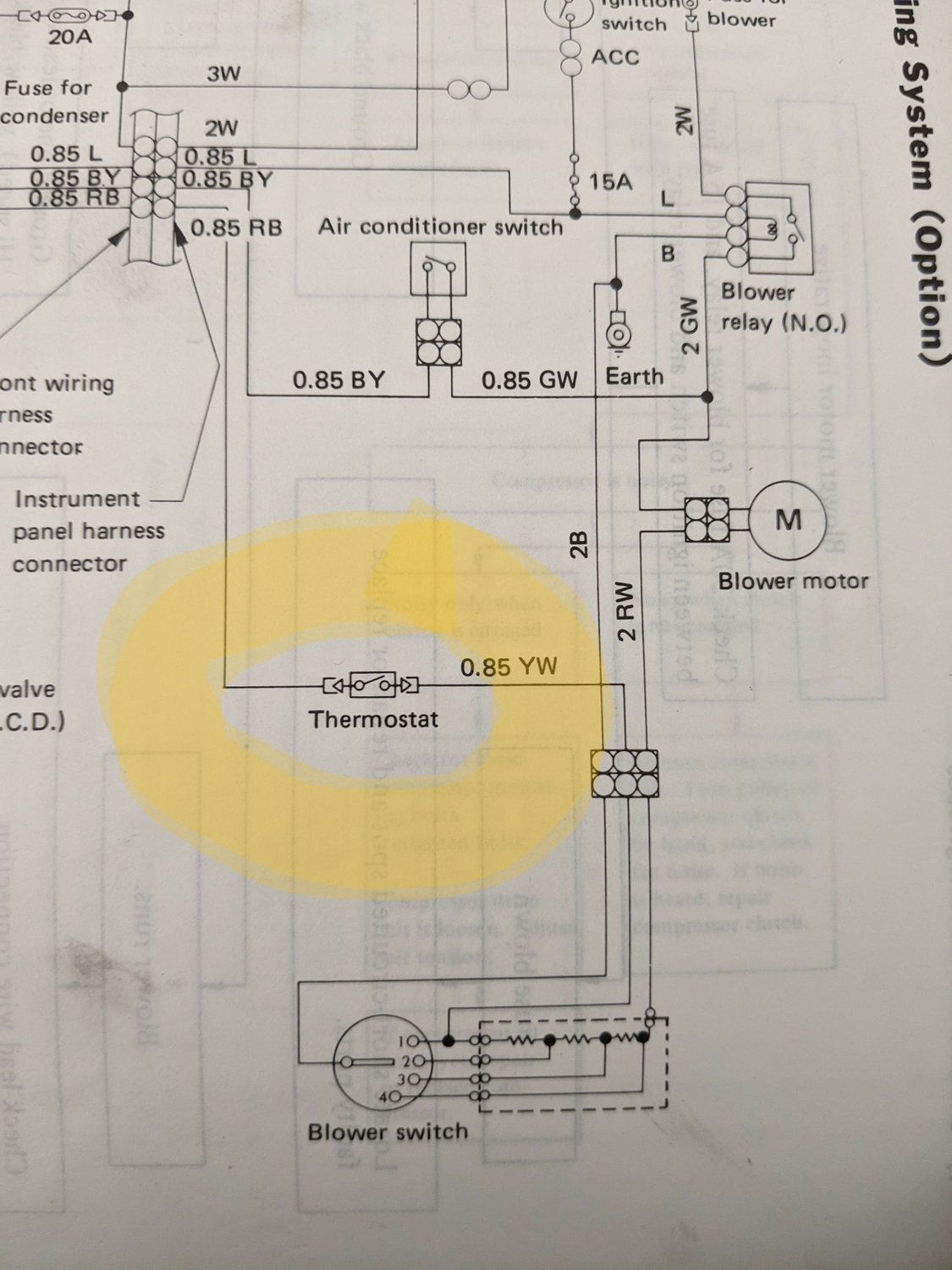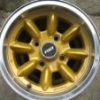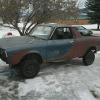Search the Community
Showing results for tags 'Air'.
-
I’ve bought a 1991 AWD Legacy LS Special wagon for a teen driver’s first car. It’s got a leak in the front air shocks. What is the most cost effective way to repair/ replace? I’m $1500 in and this car only has 98k miles on it, so a lot of potential life, but an inexperienced driver. Can they be swapped out for regular shocks or is there an affordable aftermarket air option? Should I look for struts from a junk yard? Is it worth it to pay $600 per strut to Subaru for their replacement parts?
-
Pretty self-explanatory title, I can't move the air flow from the mid/head level. I press the buttons and the lights change, but I don't hear anything inside and it stays where it is. Anything I can do easily to change this? I wanna be able to use my defrosters this winter. I have done some research and heard some possible issues could be a vacuum leak, blown fuse or an issue with the blender door or mode actuator.
-
My mom passed down her 91 Legacy for my son's to drive. She originally bought it when it was brand new. She said one day the vent would not put out head or cold on any setting. I was sure the it was the blower motor so i bought a new one. We took out the old one and for the heck of it tested it and it worked. So now I'm stumped. Will check the fuses again, but think we covered that. The guages light up when you hit the A/C or Heat, but it just kinda makes a sad whine from inside the dash and then nothing...no air.
-
Hello all! I am posting because I'm trying to figure out exactly what is going on with my engine in my Loyale. For a while now, I have been having oil in my air box and intake snorkel. I have done a lot of work on this engine already, and with a baby on the way, I need it more reliable than ever. I'm due for a tune-up, but I don't want to spend money on an air filter and spark plugs when they're just going to get ruined again. Here's my issue: I have oil coming into my air box, and a pretty decent amount at that too. The whole bottom half of my air filter is covered in oil, with it puddling up at the bottom. The whole rubber intake snorkel going to the throttle body is coated with oil on the inside, pooling up in the grooves of it. My throttle body and inside my intake manifold remain clean, however. When I engine brake down long hills is when it seems to be happening, since when I get to the bottom of the hill and touch the gas, I get a cloud of blue smoke out the exhaust (temporarily), oil burning smell, the engine hesitates, and then goes back to normal when the oil is burned off. Going up hills and normal flat driving don't yield any abnormalities, and I can't see any blue smoke out the exhaust (from the rear view mirror). First things first, I took care of the obvious. Replaced the PCV valve with a genuine Subaru one and replaced all the PCV hoses. The T connections are free and clear, and I even have the updated design with the blue T fitting, and it's installed properly (don't have the T fittings switched around). I also have taken care of just about every single vacuum line in the engine bay since most were hard and cracking. When I replaced everything, the problem still continued, though arguable it got a little better, just a little. So the mystery is why is it still doing this? Just the other day I removed all the lines and PCV valve, made sure where the PCV valve goes into the intake manifold is free and clear. I have cleaned all the hoses and air box, but after just a drive or two, it goes back to the condition it's in now. Oil in the air box and intake snorkel, oil coated PCV lines lined on the inside with milky residue, similar to what you would find on an oil cap on an engine with head gasket issues. I presume this is just condensation, and it's worth noting that the oil cap has been replaced (it doesn't rattle; it seals properly) and it has no milky residue whatsoever. The oil in my air box becomes so much that it leaks out the bottom, spilling oil on my frame rail right underneath the air filter and eventually going onto the ground. What is this telling me? With all the basics covered and what all my extensive research has yielded, one can simply pass this off as blow-by. This doesn't make me a happy camper because again, I have a baby on the way so I can't have things like leaking piston rings. I had the piston rings go out on my old Loyale and I don't want to deal with that after the baby is born, so I'm trying to take care of things ASAP and fix everything properly, so my car is the last of my worries and I can focus my attention on the baby. So let's get into further diagnostics! I have a vacuum gauge hooked up in my car, and it reads perfectly. Like, I have not seen a vacuum gauge give more ideal readings on an engine. At idle when warmed up, it sits beautifully at around 22-23", like it should. The vacuum gauge is very responsive to throttle inputs and never fluctuates or crazy needle vibrations (my old Loyale had erratic readings on the vacuum gauge, indicating piston ring issues, and sure enough they went out on me). So according to the vacuum gauge, my engine is in good shape, at least the bottom end is. Today I did a compression test on the engine to see if it would yield any interesting results, and sure enough it did. The two cylinders on the passenger side of the engine (2 & 4) came out both at exactly 120 psi. However, the two cylinders on the driver's side (1 & 3) came out to exactly 60 psi. Obviously something is going on with that side of the engine. First idea for this would be my exhaust leak. The exhaust studs on that driver side cylinder head are completely messed up. When I bought the car, one exhaust stud was missing and the hole was oversized. Last time I had the engine out, the other stud decided to break off in the block. With careful attention to detail and help from coworkers at the shop I was working at, the best I could do was drill a hole in the broken stud, but we kept breaking drill bits because it was so hardened. Currently, the exhaust is barely being held on on that head, but it's sketchy to say the least. Bottom line, if I unbolt the exhaust, I don't know if I'll be able to get it to tighten again. I need a new cylinder head on that side to fix the problem, but I've been putting it off since I don't want to deal with all that work. So I have a minor exhaust leak from the bottom of that cylinder head (as well as a muffler about to fall off, getting a new one next paycheck though), and I'm not sure if that would affect compression test results but it is worth noting. My question is, where do I go from here? Obviously my next step is a leak down test, but it might be a short while before I can get my hands on a leak down tester and air compressor (might be able to do it at the shop I work at, but finding time is hard). So I'm looking for some advice as to what it might be. I am more than happy to throw "new" (used, but machined) heads on the engine and do the head gaskets, but if it's the piston rings, I'd be looking at changing out the long block since I don't have the tools or extra money to rebuild the block. I would much, much, much rather do the head gaskets. It'd be nice to know that they've been done and I've got a lot of new parts on this engine (replaced just about every oil seal/gasket, brand new lifters, timing belts, etc.) so it would already make the job that much easier/cheaper. Oh yeah, last thing to mention is oil and coolant consumption. I do not lose any coolant, as the coolant level in both the radiator and the overflow reservoir stay steady and topped off. However, even after replacing all the oil leaks, I do lose oil. About 1 quart every 1800 miles or so. Usually by the time I do my oil change at 3000, I have had to add about a quart and a half. Sometimes a little more, sometimes a little less. If it's blow-by, that means my rings are shot, yeah? If that's the case, then why is my vacuum gauge reading perfectly fine? Even if it was my valves having issues, that would be obvious on the vacuum gauge. So assuming the gauge is telling me the right things, then that means that I'll be needing to do the head gaskets and throw on some rebuilt heads with good valves and seals. But if THAT is the case, why is oil getting into my PCV and intake? The only thing I can think of is the valve seals letting oil in or something, but again, I feel like I would notice that on the vacuum gauge. Now I've never done a head gasket job before so I could be ignorant about small details inside the head that can cause things like this, but it's not outside my realm of what I can do/learn. Would the exhaust leak on that cylinder head affect compression reading? Would I fix the compression by replacing the head and fixing the exhaust? If so, how/why would that affect the oil getting in my intake? Any help is appreciated, even if it's just spit balling an idea. The baby is due in July and I'm trying to get this thing running like a top by the beginning of summer so I don't have to worry about my car. I could, and might, install an oil catch can just to ease the stress on the engine, but like I said, I like to get things done properly instead of just bypassing the issue. Thank you so much for reading all of this, I know it was a lot. I just try and give as many details as I can. I work as a technician and I know the smallest details can affect diagnostics a lot. Grant
-
Hello all, I'm new to this forum. I have owned my 89 XT GL for about a year now with minor problems but overall satisfied. I am having a hard time locating any kind of parts for this thing and was hoping to get some knowledge from you guys. First is there any short or cold air intakes made to fit for the 1.8l? 2nd, has anyone fabricated a short ram themselves. i was thinking i could fab something up to relocate the MAF closer to the manifold and then just put a short pipe and cone filter on the end of it to free up some of that engine noise i love so much. I'm just trying to get ideas of how i want to go about it. I'm not kidding myself i'm not trying to make this thing go fast because nothing short of a swap to the turbo 6 would do that lol. I've already put a subtle performance muffler on the back and I'm just trying to get the front to match in sound. any help of comments are appreciated.
-
Hello all, I'm new to this forum. I have owned my 89 XT GL for about a year now with minor problems but overall satisfied. I am having a hard time locating any kind of parts for this thing and was hoping to get some knowledge from you guys. First is there any short or cold air intakes made to fit for the 1.8l? 2nd, has anyone fabricated a short ram themselves. i was thinking i could fab something up to relocate the MAF closer to the manifold and then just put a short pipe and cone filter on the end of it to free up some of that engine noise i love so much. I'm just trying to get ideas of how i want to go about it. I'm not kidding myself i'm not trying to make this thing go fast because nothing short of a swap to the turbo 6 would do that lol. I've already put a subtle performance muffler on the back and I'm just trying to get the front to match in sound. any help of comments are appreciated.
-
The actuator for the vent system on my 1997 Brighton Legacy wagon has died and I am desperately looking for a replacement. My local Subaru dealer as well as my local mechanic have not been able to help so far. Does anyone have any suggestions? The mechanic is afraid if I keep driving on it, the door to the vent will fly off and damage something else.
-
After replacing my radiator I started with a distilled water/white vinegar mix, then three rounds of water flushes. On the water flushes I used the factory-preferred method and had some pretty interesting results. Before I explain what happened, let me tell you what did NOT happen:The engine did not overheat. The temp gauge didn't budge above normal at all after reaching operating temperature. I attribute this to massaging the radiator hoses a whole bunch before capping the system each time.The check engine lamp never came on. As in, not once. Not even a flicker.I did not change throttle position at all when the phenomena began, until noted in the video.It was repeatable enough to happen on three consecutive "burps." So, what did happen? About 6 or 7 minutes into my 10 minute burp procedure, I would lose control of the throttle. Mind you, this is a drive-by-cable throttle, and I hadn't changed the throttle position at all. When this happened the rpms would drop down to about 1,250, then up to 1,750 rpm and repeat until I either floored the throttle, or backed out and let the engine idle. What the hell is going on?
-
I've been reading around and I think I've figured out my a/c issue but due to my rather novice knowledge I'd be interesting in hearing some other opinons. Oh, my car is a 2001 Subaru Legacy L with 220,000km on it. Air conditioning worked last summer, there was a warm spell early in the summer and the a/c seems to work decently enough but I only used it for five or ten minutes. Now that summer has set in I went to turn it on a couple weeks ago and nothing happened. It still blew air but nothing cold, compressor didn't turn on and clutch (?) didn't do anything. I turned to the Internet, my Hayes manual and USMB. First thing I found to do was clip the two green plugs togethor under the steering wheel. Both fans on the rad turned on and off as they should and the relay seemed to work for the a/c. Went back to do more research and came back out. Took the caps off the pressure lines for the a/c and stuck a screwdriver onto the pins. Both gave a hiss, so not completely empty. I only did each for half a second, didn't want any getting out that didn't need to. After some more reading the third thing I tried was jumping the pressure switch located near the back of the passenger side of the engine compartment. Unplugged the cord, jumped the contacts and pressed the a/c button. The compressor came on and clutch caught. I tried turning off and on the a/c by the button a few times and the compressor and clutch went off and on. I let it run for a few minutes (with the a/c on) but it just blew warmish air. From my reading if jumping that works then it could be two things, either the switch or low freon. Since jumping the pressure switch worked but it only blew warmish air even though there was still some pressure in the system I'm guessing low freon is my problem. Would anyone with more experience care to comment? Hopefully I'm on the right track. Thanks!
- 16 replies
-
- a/c
- air conditioning
-
(and 2 more)
Tagged with:
-
Does anyone have any suggestions on how to make a cold air intake for a swapped ej22 brat? i want a real cold air not just the short ram. thats what i have right know and it real sucks with the rapid changes in temp here in colorado. I lack power when its above 65 degrees. Don't know if thats related to a missing rear o2 sensor though or coming from engine bay temp. But i still would like to make a Cold Air system for the Brat. Any suggestions would be much appreciated (mainly where to put filter and material to use)
-
Hey guys, new member here. I recently aquired a silver 87 GL-10 turbo wagon with air suspension and the 3 speed automatic. I essentially got the car for free so I figured if it ran, I'd spend some time and a little money trying to get it running good so I'll have a winter car. It sat for probably 2 years, at least, up in the woods of the northwest. Encouragingly the car started right up with a jump, and it actually drove over 180 miles down to where I live without any needed repairs. So far, the problems I’ve found with the car are limited to the push-button 4WD not engaging( which may be a bad button is all) and more importantly...the air suspension will not lift the car. When I turn the key to ON, the compressor starts running and continues to do so for about 8-10 minutes then shuts off. After it shuts off, the light begins to blink on the dash indicating that there is an error. I’ve found very little technical information on this system that I can effectively use to properly troubleshoot the problem. The little that I have found has informed me that the behavior I just described usually occurs when a leak is present in the system. Because the ride height does not change after 8-10 minutes of the compressor running, the computer assumes there is a leak so it shuts off and projects an error code to the driver. I also read somewhere( and I could have this wrong, please let me know) that the computer will always try to raise the rear of the car BEFORE the front. So, with this in mind I removed the plastic and carpet from the back of the car and checked the air lines for holes. I found out that mice had literally severed the air line going to the passenger-side rear wheel. I bought a couple air-line bridges(blanking out on what they’re actually called) and patched the line. As of right now that’s the only defect I can find in the air system. After fixing that though, the system still does the same thing. It runs for 10 minutes without any change in elevation, and then shuts off leaving me with nothing but a blinking dash again. What I’m hoping for is for someone who has had experience with these air systems to suggest some things to try. Or that possibly someone who has a technical shop manual for the 80’s GL’s could take a gander at the pages detailing air suspension troubleshooting and post some suggestions...maybe even some scans One observation that I’m not sure is important, is that my dad unhooked the middle hose from the compressor that goes to the tank. We noted that he was able to blow air INTO the compressor...which seems like something irregular. But I’m not sure. Maybe it needs a new diaphram? Help me out. Oh and before everyone starts chiming in saying that I should just tear out the air suspension.. I’m not going to put that much work into this car lol Plus, everything seems to be in good condition, the car has 150,000 miles. Thanks in advance guys.
- 28 replies
-
- air suspension
- gl-10
-
(and 6 more)
Tagged with:
-
So my front struts on my 78 brat are so stiff that i have no flex at all, and i dont want to replace them with more struts. i was thinking, i should be able to use air shocks and an on-board compressor instead of front springs, right? i looked at the specs of the shocks i want to use and they have 10 inches of travel and a max psi of 200, but i watch videos on youtube of people that put these on vw bugs and toyota trucks, and they only provide 3 inches of lift or so. my question is, are these people not airing the shocks up to their max, or is that all the shocks are capable of? if that is all they can do, would i get more lift out of using dual shocks on each side? i want to get 7 inches or so of lift out of these things, 7 inches between fully aired up and completely empty i mean. would i just be better off to go with airbags? i kind of dont want to do that because they seem to require a lot more psi... somebody help me out please! these are the shocks im looking at: http://www.amazon.com/Gabriel-49235-Hijackers-Air-Shocks/dp/B001AM8KAO/ref=sr_1_2?s=automotive&ie=UTF8&qid=1388624613&sr=1-2&keywords=air+shocks and this is my brat!
-
I recently purchases a beautifully clean '87 GL-10 Turbo equipped with a working Pneumatic Height Control System. Works great, feels great, and looks great... BUT (those of you who are familiar with the system were waiting for that but...) I noticed that when I'm riding on the higher setting (when the system is engaged and the car is fully raised) and I turn RIGHT, there is a knocking wobbling sound coming from the front right wheel. Once I get going straight again, the sound tappers off and goes away until I turn right again. Any ideas?
- 4 replies
-
- Air
- Suspension
-
(and 3 more)
Tagged with:









